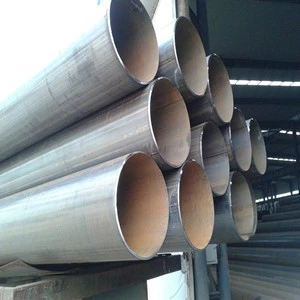Welded steel pipes, also known as seamed steel pipes, are generally made by coil weld with steel plates or band steel.
Classification according to the surface treatment of pipes Welded steel pipes
Welded steel pipes can be divided into galvanized and non-galvanized steel pipes. The galvanized surface of the welded steel pipe turns whitish and this pipe is called the galvanized welded steel pipe or the galvanized welded iron pipe. Ordinary
welded steel pipes whose surfaces are not galvanized are also called black pipes.
Galvanized
welded steel pipes are often used for transporting relatively clean media, such as domestic water, purified air and instrument air. Non-galvanized
welded steel pipes can be used to transport steam, gas, compressed air and condensed water.
According to the requirements of users, the welded steel pipe can fall into two types when leaving the factory
One is threaded at the pipe end, and the other is unthreaded at the pipe end. The length of
welded steel pipes with threaded ends is 4m to 9m, and the length of
welded steel pipes without threaded ends is 4m to 12m.
Welded steel pipes different in wall thickness
They are divided into thin-walled steel pipes, heavy wall steel pipes and ordinary steel pipes. The ordinary steel pipe is the most used in process pipes, and its test pressure is 2.0MPa. Test pressure of the heavy wall steel pipe is 3.0MPa.
Connection ways of welded steel pipes
There are threaded connections, flange connections and welding. The flange connection is divided into the threaded flange connection and the weld flange connection. And the welding method is divided into gas welding and arc welding.
The specification of commonly used welded steel pipes
The nominal diameter is 6mm to 150mm.

